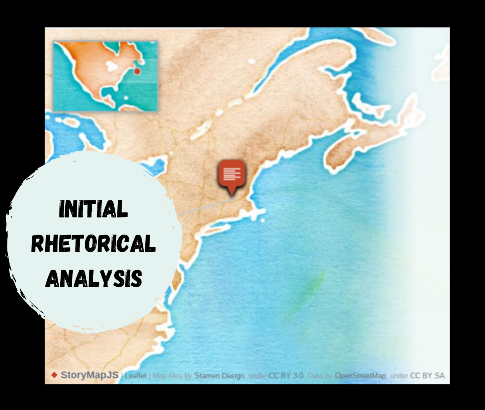

Elenore Long organizes the second half of her book around five case studies and a final practical guide that synthesizes the main components and purposes of a responsive rhetorical art. The case studies are from different geographic areas and include both community and classroom settings (though Long is often working to destabilize the binary opposition between these spaces). In each case study, the reader is introduced to a new local and global context with different problems, needs, and uptake of the responsive rhetorical art. The act of resituating oneself to different applications of the responsive rhetorical art requires thoughtful attention, particularly as the reader is both trying to understand what a responsive rhetorical art is and how it operates in situ.
The process of reacclimating to new scenarios makes sense within the context of Long's project as it mimics the uncertainty of how early rhetorical uptake operates in local publics when the shared issue at hand is not fully defined or understood. Long has organized the book to facilitate recursive reading: get a sense of the framework in Chapters 2, 3, and 7; move to one of the case studies to see how a responsive rhetorical art works in practice; and then continually return to the framework as each case study reveals new obstacles, new goals, and new dynamics that shape the responsive rhetorical art differently in each context. Through the five case studies, Long demonstrates the participatory research methods she uses to enact and make sense of her emerging theory of a responsive rhetorical art.
To understand what makes up a responsive rhetorical art, Long adopts participatory research methods to observe and take part in public rhetorical processes (2018, p. 38). "Participatory" signals that Long works with community members and other rhetorical scholars to collaboratively theorize and perform a responsive rhetorical art. Long works with others by participating in public events, observing events through video tapes, conducting formal and informal interviews, working as a literacy teacher, and meeting with event planners and participants. To analyze what happens in these public spaces, Long adopts John Flanagan's (1954) critical incident technique as an analytical tool that allows her to focus on activities where institutional practices conflict with people's lived experiences and ability to thrive.
To understand the sociocognitive dynamics of the publics Long uses to understand and test her emerging understanding of a responsive rhetorical art, Long conducts intercultural rhetorical research, which observes how people come together across differences by asking "what went down" from various participants' perspectives. By asking "what went down" at the event, Long focuses on people's motives, logics, power, and interests in being apart of that particular public space. To this end, Long argues that a responsive rhetorical art needs to be actionable in service of the questions and responses that emerge from collaborative inquiry. What Long does particularly well is frame her methods by reimagining the role academic scholars have in understanding and building responsive, emerging publics. Instead of acting as a "fixer" or a "knower," Long understands scholars as people whose thriving is inherently wrapped up in the thriving of others and who must ask how, if at all, they can be a catalyst to others' goals within a particular historical and institutional context.
To think through how a responsive rhetorical art works in diverse ways in distinct contexts, I use maps to introduce how the different case studies furthered my understanding of the seven methods Long uses to conduct her work. While maps can often reify colonial and "official" markers of place that may not reflect vernacular or communal understandings of place (see Cintron, 1997), mapping the case studies allowed me to illuminate the geographic and situational diversity of how Long demonstrates what a responsive rhetorical art makes and does. After each map, I analyze how particular case studies demonstrate one of Long's methods in situ. The methods are introduced in the order Long names them in Chapter 3 as loose chronological steps, although each practice is also recursive and warrants revisiting throughout the research process.

Driving questions: What is happening, who is it happening with, and how is it happening?
Long uses initial rhetorical analysis to situate the reader into the emerging public at hand through the use of "snapshots." Snapshots work as reflective memos and set the scene from a first-person informal perspective. Some of the generative questions Long uses to guide further analysis are introduced here, but the main purpose of the snapshots is to help us understand how and why people are coming together for a particular activity. The messiness and humanness of the case studies are most prevalent in these snapshots, as Long uses them to question how people in the space were asked to make knowledge and what happened as a result of them coming together. In this way, the snapshots capture the "rhetoricity" of these newly emerging publics, or the symbolic and material energy necessary to propel collaborative rhetorical invention.
The concept of "rhetoricity" and Long's initial rhetorical analysis through the snapshot genre are particularly grounding in Chapter 4's "Gambian American Student Activists Call Together a Public" case study, in which Gambian American student activists in New England created a call-and-response activity to share stories about barriers to education and the fraught impact of gender roles on their ability to thrive in both United States and Gambian social contexts. Through the informal call-and-response space, student activists first called attention to the institutional and historical roots of these issues and then built a space to welcome all attendees' rhetorical goals (even if they at first appeared irreconcilable), to join together to critique these conditions, and to build knowledge collaboratively in order to envision new pathways forward. The dynamism and overt activist purpose of the public featured in this case study allow Long to describe how rhetoricity fueled joint knowledge-making activities that she would later identify as a key purpose of a responsive rhetorical art.

Driving questions: Can researchers and community members read seemingly contradictory accounts of a public in order to understand how and why a public came together? Can this practice help determine what the need is for a responsive rhetorical art in public life?
In Chapter 6, "Gambian American College Activists Conjure an Alternative to Aid-to-Africa Discourse," Long and her community co-authors Nyllian Fye and John Jarvis continue their account of the Gambian American student activist call-and-response event that evolved into a beauty pageant performance. While Long begins by acknowledging critiques of the gendered logics that inform traditional beauty pageants, she ultimately explains the beauty pageant format facilitated a responsive rhetorical art by bringing people together with diverse reasons for attending the event, which ranged from the social to the political. During the beauty pageant, the student activists used performances to illuminate the harmful impacts of "Aid-to-Africa" discourses that perpetuate Western savior narratives.
Instead of the traditional "presentation-answer" format we often see in academia, Long argues the social and performative design of the beauty pageant created a space for relational, conceptual, symbolic, and material forms of invention to emerge. For Long, invention in this sense was a multi-perspective collaboration built from the rhetoricity generated between performers and attendees. The beauty pageant format also demonstrates what questions facilitate the responsive rhetorical art. For Long and the pageant planners, it was not a matter of whether the beauty pageant was appropriate, but how this format could bring people together to engage in an emerging and collaborative knowledge-making practice. Because there were many diverse actors with different rhetorical purposes for attending the event, Long was able to use rival readings to track and listen to how the performances influenced community members' engagement with the Aid-to-Africa discourse and how participants' different rhetorical purposes coalesced to inform a responsive rhetorical art that emerged during early rhetorical uptake.

Driving questions: What do rival readings reveal about the nature of a responsive rhetorical art in this context? What emerges from the tensions, agreements, and nuances of different perspectives, and how can these perspectives inform the action that happens after early rhetorical uptake of the issue?
In Chapter 4, "Community Actors Taking Up a Responsive Rhetorical Art," Long observes a South Sudanese Women's Leadership Council meeting convened in Phoenix, Arizona. The International Rescue Committee, the Arizona Refugee Resettlement Program, and an organization that offered social services for Somali refugees convened a meeting with the council to discuss why South Sudanese women were not utilizing available services. Long argues the premise of the meeting inscribed a self/other binary that only recognized the South Sudanese women as "recipients" of services. During the meeting, women of the leadership council publicly quit their positions, articulating that they would not continue the meeting on those rhetorical terms. Through this public demonstration, the South Sudanese women drew attention to their desires and needs to redefine the institutional practices of resettlement on their own terms, noting that their lived experiences were more complex than the discourse that framed the South Sudanese women as passive recipients of services. As participants at this meeting, Long and community members identified themes across rival readings of what went down at this meeting to reveal a pathway forward: the service organizations needed to listen to the lived experiences of South Sudanese women to co-construct effective institutional practices that met the actual needs of South Sudanese women on their own terms. Thus, this chapter reveals the active purpose of a responsive rhetorical art that works to not only identify themes, but to use those themes to transform harmful institutional practices.
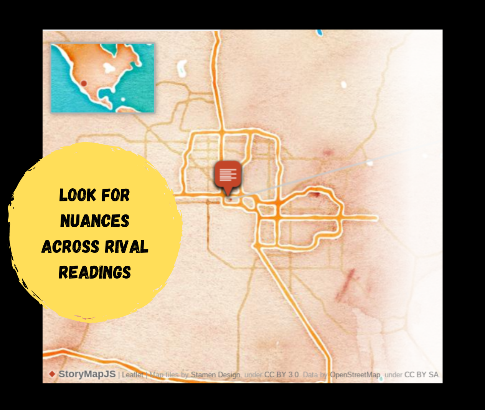
Driving questions: How can a responsive rhetorical art foster public world making? And, how can public world making attend to peoples' understandings of who they are, what they do, and what they are up against?
In Chapter 5, "Supporting Rhetoricity in Face of a Stalled Project," Long brings together the global and the local to reveal how publics are informed by complex histories and realities. In this chapter, Long reflects on a meeting with the Nile Institute for Peace and Development. Long had originally worked with the institute to develop a community literacy program with the South Sudanese refugee population; however, renewed conflict between the Nuer and Dinka peoples of South Sudan drew attention away from the project. In the midst of this geopolitical context, community member and South Sudanese woman Roda Nyapuot presented a video she had created that displayed the tension between her rhetorical purpose as a writer and the institutional literacy practices of her writing class. The video sparked conversation amongst participants about Nyapuot's story that inspired others to share their stories in the emerging public, establishing a space of shared public world making.
In tracking the nuances of the video and the ensuing conversation, Long uses intercultural critique to identify questions and concepts that were being taken up as artistic tools that revealed how knowledge was being made in this public and what that knowledge could do if catalyzed as a responsive rhetorical art. The conflict amongst institutional literacy practices and Nyapuot's rhetorical purposes as a writer also provided space for Long to reflect on her role as a literacy scholar and teacher. Her role in this space was not to evaluate Nyuapuot's video in relation to the expectations of the literacy classroom, but to reflect on the potentially harmful effects of institutionalized literacy instruction and how she as a literacy instructor could support Nyuapuot's rhetorical purposes in the video and within the emerging public.
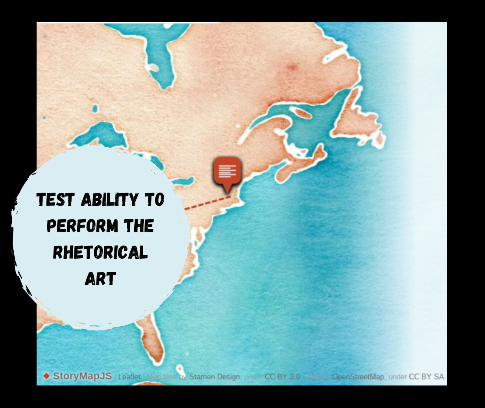
Driving questions: Is a responsive rhetorical art teachable? Or, what does this mean for rhetoric and composition scholars' pedagogy and academic program design?
In Chapter 8, "Can We Make Inquiry Professional?," Long tests the potential and dynamics of a responsive rhetorical art in a pedagogical and professional development setting. In this chapter, Long focuses on students in a writing-intensive course at a small women's college in New England who plan on entering the helping profession. In particular, the chapter follows one student, Hillary, and her reflections on interning with the Compass/Familias women's shelter. While the internship program had been long-standing, teachers within the program noticed that the mandatory writing reflections submitted at the end of the program often avoided deep rhetorical reflection. Thus, Long asks how adopting responsive and rhetorical artistic pedagogy could make internships and relationships with community partners sites of collaborative knowledge making and reflection. Additionally, Long inquires how these professional partnerships could pave new, reciprocal pathways forward for students, teachers, and community members. This case study reveals how Long uses diverse institutional and public contexts to test how a responsive rhetorical art works and what implications the art has for community literacy teaching and program design.
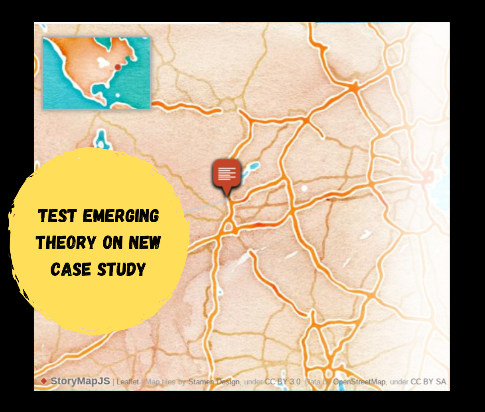
Driving questions: What are the historical and institutional dynamics that influence the exigency of an emerging public? How do we make concepts actionable in service of collaborative inquiry and action?
Up until Chapter 9, "The Nipmuck Chaubunagungamaug People Do Exist," Long presents the work of a responsive rhetorical art as a challenge to the limits of institutional practices, forging new pathways for action that respond to the actual needs and desires of community members. Using various rhetorical models of public life, this chapter tests the transformative potential of a responsive rhetorical art when formal, textual rhetorical strategies have failed. In 2004, the U.S. government's Bureau of Indian Affairs (BIA) rejected the Nipmuck's petition to be federally recognized as an American Indian tribe. In face of this bureaucratic brick wall and the dehumanizing assumptions the Bureau used to discredit the Nipmuck's petition, Long and her co-authors John Jarvis and D. Deerheart Shaughnessy ask what a responsive rhetorical art can still make in face of these barriers. Through a partnership between the Nipmuck tribe and students in a New England women's college "Conflict and Consensus in Contemporary Society" writing class, Nipmuck tribe members created a documentary project that spoke to the complex nature of "recognition" for the Nipmuck tribe. While the project did not overturn the BIA's harmful institutional decision, the action research project provided space for the Nipmuck people to define and validate their existence on their own terms, which illuminates a new purpose of a responsive rhetorical art.
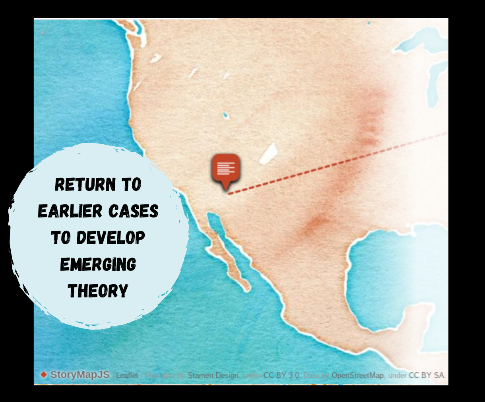
Driving questions: What do all of the research practices reveal? How do these research practices come together to understand the dimensions and purposes of a responsive rhetorical art?
In Chapter 10, "Untangling Empowerment Knots," Long and her co-authors Roda Nyapuot Kuek and Jennifer Clifton envision a responsive rhetorical art not only as something spoken or written but also as a material action as well. The chapter uses Arjun Appadurai's theory of the tension between movement and people's encounters with public institutions to consider how communities develop a public after displacement and relocation. This chapter brings together all the generative questions, artistic methods, and tools that enlivened a responsive rhetorical art in the previous case studies. In other words, the authors return to the earlier cases in order to understand if this emerging theory can address a long-standing problem of literacy studies: "literacy's elusive relationship to personal and collective empowerment" (p. 189). In order to address this problem and understand how collaboration can create a responsive art that addresses the rhetorical goals of diverse communities, Long, Nyapuot Kuek, and Clifton use three technai (positional mapping, networking arguments, and negotiating conflict) to make the inventive potential of an early rhetorical uptake visible, material, and experiential. Using generative question cards and yarn, Long and her co-authors facilitated an activity that made invention visible by asking participants to map out the arguments that impacted South Sudanese women's engagement and conflict with institutional services. The yarn became an empowerment knot that revealed the time, energy, relationships, and resources that influenced women's experiences resettling in an area after forced migration. In looking back at the previous case studies and making the work of a responsive rhetorical art visible, Long creates a networked ecology for social change that is collaborative and well-supported—revealing the nature and purpose of a responsive rhetorical art.
In the final section of this review, I will offer concluding thoughts and implications for how future work can continue and extend Long's theory of a responsive rhetorical art.